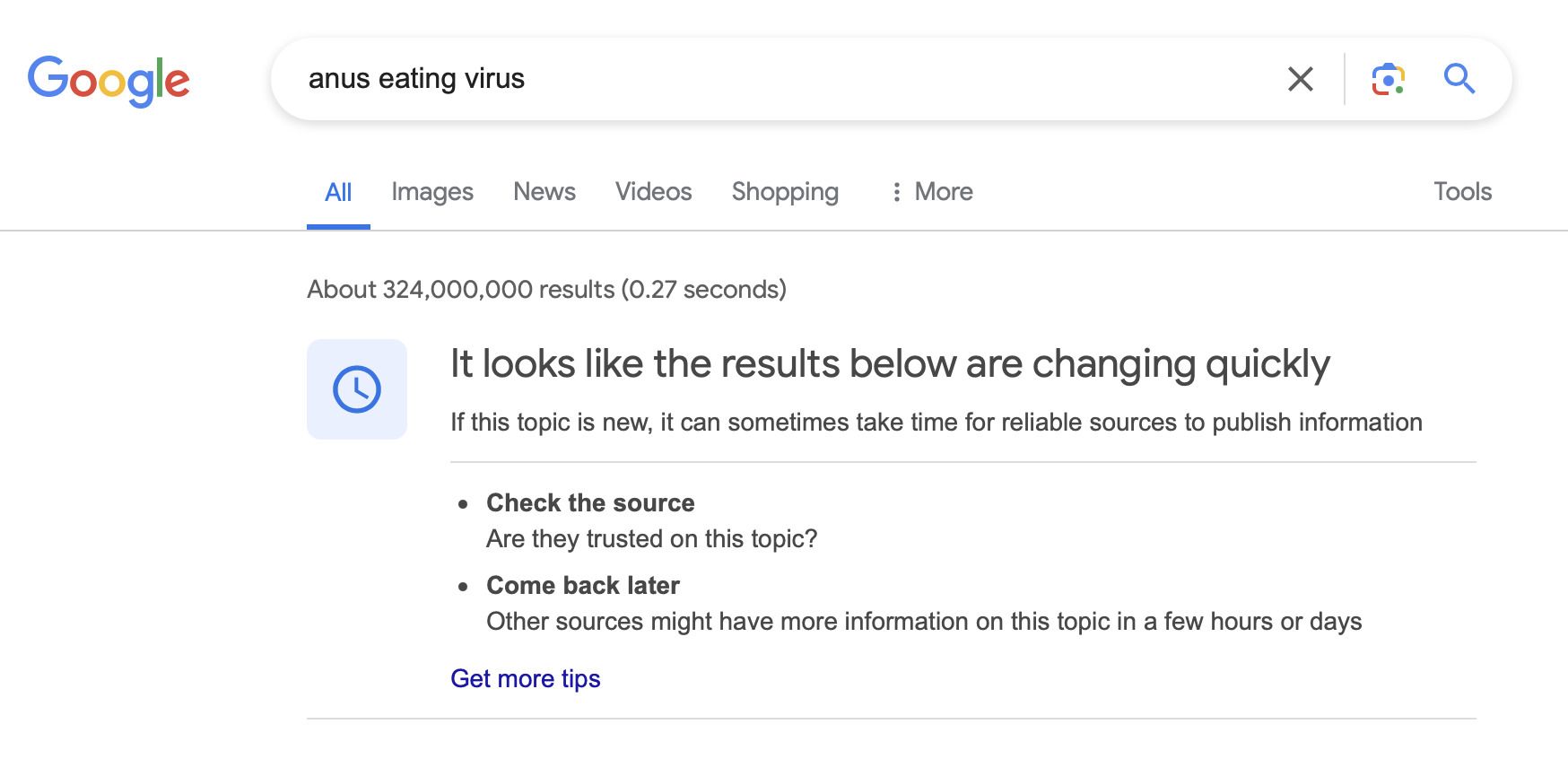It’s Friday night and that means we need to have a little fun.
I saw this article earlier today and saved it for researching right now.
Let’s dig in and do a Fact-Check on this together, shall we?
It’s actually kind of interesting….
Here’s the headline:
This is a real headline. pic.twitter.com/4oOj3ug9mp
— Bohemian Atmosphere (@BohemianAtmosp1) March 21, 2024
That’s why I say it’s Friday night and we’re having fun because that is one heck of a headline!
But…is it true?
It all comes from this DailyStar article which reads as follows:
A mystery flesh-eating disease that kills around 30% of people who become infected is spreading rapidly around Japan.
In the first two months of 2024, some 378 cases of streptococcal toxic shock syndrome (STSS) were detected in the country. Last year it is believed there were 941 cases, which has caused concern that this year is set to surpass that number by some distance.
STSS is caused by a more severe form of the bacteria that causes Streptococcal A, the strep A throat infection common in children.
Infections this year have been detected in all but two in all but two of Japan’s 47 prefectures, raising eyebrows about how widespread the bacteria has become. The Japan Times reports that there are usually fewer than 200 cases per year of this most severe group A streptococcal disease.
What is so concerning about this particular spate, however, is that experts have admitted that they are currently none the wiser about what it is that’s causing it. A National Institute of Infectious Diseases (NIID) spokesperson said: “There are still many unknown factors regarding forms of streptococcus with a severe and sudden onset. We are not at the stage where we can explain them”.
According to the UK Health Security Agency, Strep A is a bacteria that can grow in the throat, on the skin, and in the anus and genitals and can cause a number of conditions that affect the skin and soft tissue. Repeated conditions of Strep A, which affect around 50million people around the world, can lead to autoimmune issues regarding the heart. Per year, severe cases of Strep A claimed around half a million lives and the condition is caught through close contact with people with it.
I really had to laugh at this Tweet, which wins in the Internet for today:
"Anus-eating' virus that kills 30% of people is spreading in Japan."
Are we gonna have to wear b-hole masks??@KevinandSluggo @955KLOS https://t.co/WvwssnPdWd pic.twitter.com/gUfcyMsJDw
— – (@thekevinryder) March 22, 2024
Surely that butthole mask will protect us!
Hilarious and well done sir!
Now here’s where it really started to catch my attention.
When I searched Google for this to see what came up, I got this screen:

Have you seen that screen before?
I have, but I have ONLY ever seen it when there’s a breaking news story that Google does not want you to know about.
So they need to buy themselves some time to figure out how they want to censor (errrrr, I mean “present”) the story to the world. So they throw this screen up there.
Dead giveaway that the story is not only real but something they don’t want you to see.
They usually take this down after all the big “Fact Checking Companies” write their articles telling you why it’s actually quite false, yes, quite!
Then I found this fairly recent article from the NY Post which certainly does seem to describe an “anus eating virus” — in the first paragraph no less!
A mom of two from Scotland feels “lucky to be alive” after a rare flesh-eating disease left her with a butt wound 20 centimeters deep.
It “looks like a peach that someone has taken a huge bite out of on one side,” Tracy de Jongh Eglin, 59, lamented to SWNS.
The former events manager, who now lives in the Netherlands, said she began displaying flu-like symptoms on Jan. 20 — she was rushed to the hospital five days later after going into septic shock and collapsing.
Medics identified a large black mass on her left buttock, and Eglin was diagnosed with necrotizing fasciitis, a life-threatening bacterial infection.
She spent nine days in a coma and underwent three surgeries to remove the infected tissue and muscle — her family was reportedly told that she only had a 10% chance of survival. Miraculously, she pulled through.
“It’s been so traumatic and changed my life forever,” Eglin said. “I’ve lost [70 pounds] and had to learn to walk again. Even now, I still can’t sit down and have to take a special pillow out with me wherever I go.”
Eglin’s husband, Aldrik, 65, grew concerned in January when his wife began sweating profusely and struggled to walk.
She was taken to Gelderland Valley Hospital in the Netherlands, where she was diagnosed with necrotizing fasciitis. The rapidly progressive infection destroys soft tissue.
“My husband had to drive behind the ambulance, not knowing whether I’d come out of it alive,” Eglin described.
The cause of the infection is not clear, although doctors reportedly informed Eglin that it could have been from something as simple as an ingrown hair or a spot.
Now, if you happen to catch this virus, I do think it is an absolutely obligation of a friend or family member close to you to at some point make the joke: “Rectum? Damn near killed ’em!”
Here’s more about STSS:
So there you go!
We rate this “MOSTLY TRUE!”



Join the conversation!
Please share your thoughts about this article below. We value your opinions, and would love to see you add to the discussion!